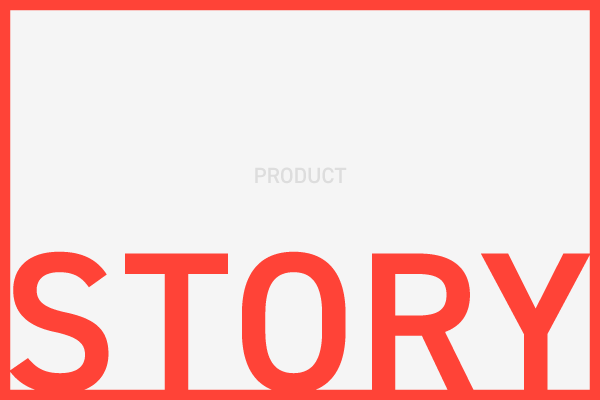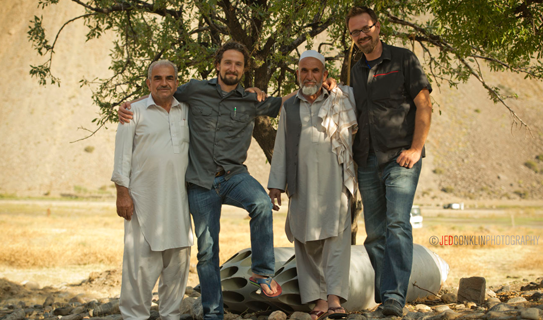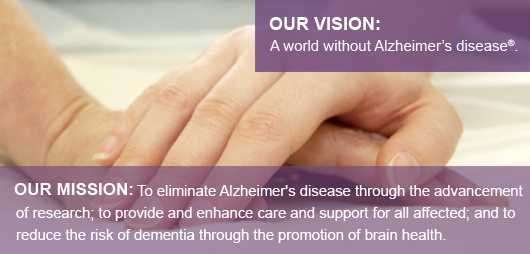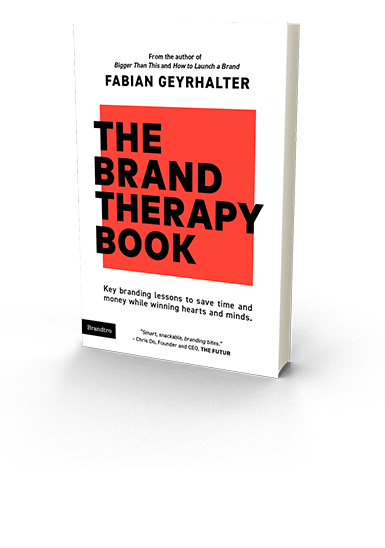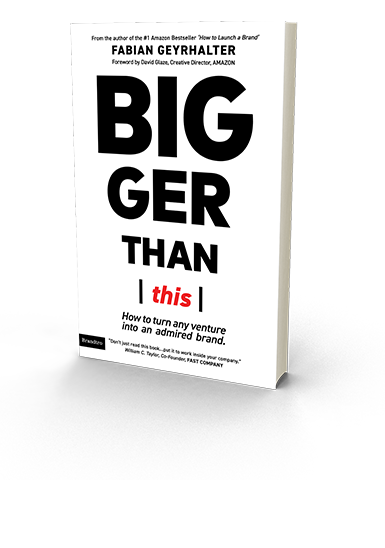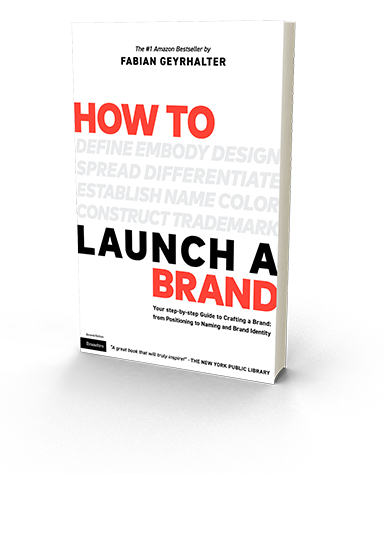Tag Archives: Brand Positioning
Lessons in Marketing Through Empathy – From a Business That Serves Homeless And Millionaires Alike
In my latest book about turning ventures into brands, Bigger Than This, I cite a stunning 116 companies over the course of only 200 pages. Some are Fortune 100 conglomerates and consumer brands like Starbucks and Uber, but most are smaller ventures that lead with empathetic stories and created swift consumer admiration. I discovered many of them during my research for the book and am now reaching out to some of those that intrigued me particularly in order to learn more from their unique ways of using their brand story as their key differentiator in the marketplace.
One such venture is SAME Café. Seemingly just another small neighborhood café in Denver, Colorado, SAME Café boasts a big differentiator as it serves healthy food to anyone who pays or does not pay for the fare. More so, it attracts millionaires that dine on delicious, healthy fresh farm-to-table cuisine in a relaxed atmosphere next to someone less fortunate who are experiencing homelessness and stopped in to survive and keep on going through their rough days.
Obviously, there is a lot to be learned from this intriguing venture, so I reached out to Brad Allen Reubendale, the Café’s Executive Director, to see what any business leader and marketer can learn from his unique business model that is so deeply rooted in empathy. Many CEO’s and marketers throw the word empathy around just like other marketing buzzwords, but it’s time to actually listen and learn from a business that is using empathy not as a term, but as their brand’s underlying DNA.
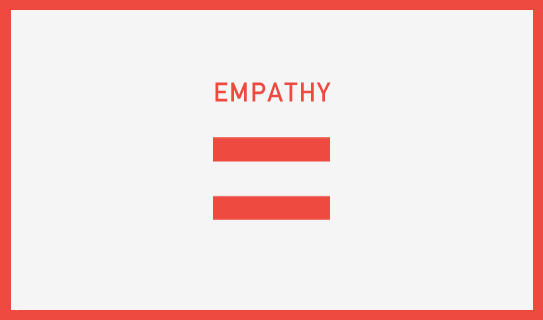
You can read my 3 key takeaways from my conversation with Brad in CEOWORLD Magazine, but below is the interview in its entirety. It’s hefty in size, but also in advice, so I recommend you don’t take the shortcut but instead dive right in – a few remarks are highlighted in red for you:
Fabian Geyrhalter: You’ve been with SAME Café for eight months. In that time, what have you learned about humanity?
Brad Reubendale: You know, I’m going to be completely honest, but it’ll sound cheesy. This has restored my faith in humanity in so many ways because this organization runs on goodwill and community involvement. I come from a nonprofit background where I was in a youth-serving homelessness organization, doing fundraising for them. So much of nonprofit work is asking people for money to do the mission. This is the first one I’ve ever seen where both wealthy folks and people that have a little extra, people who have a little less, all the way down to folks experiencing homelessness, everyone has something to contribute to the community and everyone is invested in this community. So, it’s not a stretch to say that this place really has restored my faith in community and humanity. I get to see, every day, people that are maybe millionaires sitting and eating alongside people that are experiencing homelessness. I’ve just never seen another context in which that happens. Our community, our culture does not facilitate conversation and connection between various socioeconomic groups. So, yeah, I would say that’s what I’ve learned about humanity in this process. Also, when I start getting a little overwhelmed, I begin to just look at all the goodwill that is fostered through this model. This model that doesn’t approach life from a scarcity perspective, that we don’t have it and need to get more. But, instead it approaches it from an abundance perspective that says, everyone has something to give and how do we create the environment in which everybody can participate and give in? When I start to get a little overwhelmed I look around and see all this incredible love and support around me and I’m like, okay, I’ve got this. We have this as a team. No one person has to make everything happen.
FG: That’s remarkable. Like you said, this only works in your microcosmos. You (as a brand) created this amazing place where a millionaire can sit next to someone experiencing homelessness and somehow, magically, they end up in the same place and somehow magically they don’t look at each other in the way that you would look from one tier of society to another. It feels like there’s common ground. There’s so much that one can learn from that. How can it be replicated in different industries and different verticals, politically? How do you think that this is possible, what makes it possible?
BR: Yeah, you know I’ll go back to the founders and their story of how they got this place started. So Brad and Libby Birky founded this place over 11 years ago because they had been spending time working in food kitchens and then food pantries. They recognized that there was a gap in what they were seeing. Most of the folks that they saw there were homeless men, in extremes of homelessness, but they knew that more than just that group of people were experiencing food insecurity. So, they wanted to provide a place that had dignity built into it, where there was choice on the menu. So we made sure that we always had choice, and a place that makes everybody feel comfortable being a part of it. They wanted to have a nice, cute café feel that was openly welcoming of folks experiencing homelessness along with a business person, along with someone who has money that wants to give a little extra. I would say that the primary thing that they built into this place is a sense of belonging for people experiencing homelessness. When you go into stores where they’re serving food or coffee, a lot of times homeless people don’t feel comfortable there because they make up reasons to make them feel uncomfortable and get them to leave because the presence of poverty often makes people feel an internal sense of dissonance. It’s hard for people experiencing means to sit next to someone experiencing poverty. So, what they did, is they said, we’re going to create a place where homeless people feel comfortable and then educate the rest of people on how to interact with that, rather than saying, if it makes this rich person feel uncomfortable we’re going to make you leave. I would say that this DNA has been built through everything that we do, down to the fact that we will never put a price on anything in our entire store because we never want to make someone feel less than, because they can’t afford that thing. Everything in here is ‘pay what you can’ or participate in exchange for it. So, we believe in fair exchange, both for your budget and for our budget. Basically by always keeping an eye on the least common denominator, if that makes sense, or the person who is most marginalized, we can create a community and then educate those who are not marginalized around how to interact with that. That’s, I think, the secret sauce that’s in place. We’re more concerned about making sure that someone experiencing homelessness feels comfortable and educating the wealthy, rather than making the wealthy feel comfortable and inviting the homeless into that.
FG: That’s fascinating. Usually, you have target audiences, right, you say well, I’ve got Blue Bottle Coffee and I’m going to have millennials that spent their money on our coffee and I want it to be exclusive. I want it to be something a rather singular, very specific audience connects with. You invite homeless in first and that’s going to be our target audience. But how do you get the wealthy into a place that is, in the beginning, known to serve the homeless? It must be difficult to talk to them and get them in, or is it totally not difficult and people were waiting for a chance to very easily give back and to become part of that?
BR: That’s a very good question. I thought in terms of: How do we make sure that someone with means can feel comfortable in here too? How do we remove the tension as much as possible? So, we’ve done a couple of things: One is, they did a little update on the café. It just needed a fresh coat of paint and that kind of thing. So, it feels like a little bistro that you want to sit in. We have an amazing chef who does miracles with vegetables. So, anybody would want to eat it. We also are farm to table. So, almost 100, well I’d say about 90% of our vegetables come directly from gardens and farms here in the city, that love what we do and give us their extra produce. It really is farm to table. We’re able to get donations of produce that there would be no way we could ever afford to buy. Because we’re fostered on goodwill we’re able to have this incredible food that we could never afford to purchase if we were just a business, but because we’re fostering goodwill they donate it to us. We’re able to turn it into this amazing food. Anybody would be lucky to eat here, not just like, let’s give the homeless our leftovers. How do we create a meal that everyone would love to eat and then allow homeless people to feel comfortable in that? Because we have no prices, it can have some internal tension for people when they come in and say, I have a 10 dollar bill here, is that good, is that bad, is that more than you need, is that less than you need? So, we created a chalkboard that actually has what I call a transparent budget. We have this is how much it costs per plate of food and it’s a little under $2. This is our average donation, which is a little under $5. This is how much it costs us to deliver the entire meal, which is a little under $12. So, we have the actual numbers in there. I try to update them at least annually, is what my goal is, but I make sure I’m doing it every month. In that way, everyone who walks in says, there are no prices, however, I can look at this and get an idea of what I want to come in and give at this rate. So, then it says if someone wants to drop a twenty and they know that 12 of that covers my meal and then 8 of it goes to help somebody else. If someone’s experiencing homelessness they can say, oh I want to at least cover this $2 that will cover the cost of food for me. If I can’t do that I want to participate by means of volunteering. So, it’s basically made everybody feel a little bit more comfortable and at ease because of the lack of prices. Our goal with that is to try to get people away from the idea of money as the only way to exchange for something, but instead get more into the idea of, what do I have to offer this community that will benefit while I have the benefit of food.
FG: Amazing thought process. You talked about the homeless that do not have the $2, right? They feel like, okay, because I don’t have the money I need to give back. What are the ways that they can give back? Is it by washing dishes in the literal sense? How far do you integrate homeless into SAME café? Do they actually have the chance, at some point, to work their way up and become full time hired or how does it work?
BR: That’s a great question too. So we have opportunities to do any volunteering. That includes literally washing dishes or literally cutting vegetables and prepping food. Because we are a functional kitchen we just have to make sure they have closed-toe shoes and they’re wearing sleeves or you know, those kinds of guidelines. As long as they fit in that then they’re welcome to the kitchen. They’re learning food skills. They’re learning dishes. They’re learning this stuff. We’ve actually seen many folks who come in volunteer in exchange for a meal while their homeless, get jobs in restaurants because they use us as a reference afterward. So, they’ll say, you know, SAME Café knows my work ethic and they will be a reference and then they’ll get employed because they have experience in the kitchen volunteering with us. So, that’s the kitchen side. If they can’t or aren’t comfortable being in the kitchen or they don’t have the ability to, because they’re not wearing the right clothing or whatever, then we offer options in the Café part. They can buss tables. They can wipe down tables. They can clean the windows, water our plants, prune the plants because we have a lot of greenery in here as well. So, there’s always something that someone can do. We just make sure we keep open those options for people that want to exchange time for a meal. We want to value that just as much as we do someone who’s giving us $50 for their meal because they love what we do so much.
FG: When people volunteer … I know SAME is all about trust, right? Obviously, it’s built on trust. Even with the vendors, I love the story that you’re shooting for organic produce, but you don’t make them be certified organic because it’s very expensive, difficult to obtain and you don’t want to have them go through that formality. Instead, they just sign a piece of paper every morning saying, yes, we just picked the produce. It is from our land and our land is adjacent, local. So, there’s trust, but yet they sign something. I’m sure that the system works with the volunteering in a way too? You might not clock their time, or maybe you do – how does it work? I know you’ve got certain hours too, right? I think you’ve got hours before opening where volunteers come in.
BR: Yeah, correct. We have three, four different options for volunteer shifts, if you want to pre-sign up. Our pre-sign up volunteers are typically people who are giving out of their abundance, not because of the exchange of a meal. But, for the drop-in volunteers we ask for at least 30 minutes of their time, if they’re going to pay for a meal through working. The idea behind that is, we wanted to make it fairly equivalent to if they were getting paid minimum wage; that’s roughly the amount that they would get for a half an hour of time for the meal. So, with that, we have two staff in the kitchen at any given time. There’s only three staff that work here, myself, a full-time chef and then we have a part-time volunteer coordinator. So, basically, they’re working with one of the staff members to get an assignment and then check off. They sign in and then sign out whenever they’re done. So, it is based on trust, but they are also signing in and signing out whenever they’re done with their task. The interesting thing about it is the wealthy. For instance, we have a volunteer who’s quite wealthy, who volunteers here every week when she’s in town, when she’s not globetrotting. But, she found out that we needed a refrigerator, that was going to cost us several thousand dollars. We were going to get a refurbished one. She basically said, no don’t get refurbished, that never works, and she bought us a refrigerator out of her abundance and gave it to us and that was $3,000. In the same week, and I love that this happened in the same week, we have a young man who I know is experiencing homelessness, because he lives really close to where we are and I’ve seen him out there, who was supposed to sign up for a 30-minute shift. At the end of his shift he wasn’t finished with his task, which was cleaning our windows, so he stayed an extra 15 minutes just to finish his task, because he’s invested in this community. He didn’t need to get a meal. He just wanted to complete it and make sure it was perfect. He was giving up his abundance, which was time and she was giving out of her abundance, which was money, but both of them were so invested in this organization and in this community that they gave out of what they could. Both of them went above and beyond what was ever expected.
FG: That’s just magnificent. Let’s talk about the ‘pay what you want’ or ‘pay what you think is fair’ strategy. Do you see the model being successfully applied in any other business verticals, because I’ve only seen it applied in music and restaurants, but I’ve never seen it applied to anything else at grand scale, have you?
BR: I’ve been so absorbed in this model for so long that I haven’t looked outside of it yet. I think the mentality can be there without necessarily doing a completely pay what you can. It really is based on trust of human nature and allowing people to give, because they love what you’re doing, not necessarily out of, this is how much it costs, if that makes sense?
FG: Yeah, that makes sense.
BR: I think that mentality could definitely have different reiterations that are not just the pay what you can model. I know one of the benefits of being structured as a nonprofit is that we don’t have to worry about covering our entire cost through sales. In fact, if we ever did, we’d lose our nonprofit status, because the government’s going to say, you’re a business, you’re not a nonprofit. So, we get to bolster that through fundraising efforts and through grant writing and various things, which actually helps us, because then we’re not necessarily worried about how much we’re getting into the door. We’re looking at it to make sure that we’re meeting our goals and all that, but we’re not necessarily concerned about meeting our total budget through sales alone. I’ve also found that there are things that we can do outside of the café in terms of marketing, that we would never do inside the café. For instance, we have these little tokens that are wooden. They have our logo and it says, one free meal at SAME Café, and our address and phone number and all that. So, there are these wooden tokens, and then outside of the café I will tell people I have meetings with, or if I’m speaking to a group, will you please cover the total cost of providing a meal, which is $12 for each of these tokens? They carry them around in their pocket and hand them out when they see someone experiencing homelessness or poverty. That’s something we would never put a price on in the café, but when I’m outside the café or outside of business hours I can talk about that in a more open way and say, here, you can do two good deeds with one act. You can help cover our total meal cost, and you can then go give this to someone experiencing homelessness. I know some people have their little cognitive dissonance as they give cash on the street. Some people don’t like to do it. I’m one of those people. I’ve worked in homelessness long enough to know that it’s better to give to an organization that’s doing good rather than a person because then you can understand the impact that it’s making. But, what I love about that is that it gives me the chance to do this marketing in other stages that I couldn’t do in the actual café, if that makes sense?
FG: Yeah, totally, and there’s a story that you can then spread via social media, which I know you do, which is great. Really what it is, it’s a viral campaign. By you giving people this actual piece in their hands, that then they feel like they’re walking around and constantly they think about the café, because they constantly know that they have it in their pockets and then they spread the word of the café to your second target audience while you have the first target audience engaged. It really is a viral campaign, which is amazing.
BR: I love it because it’s socializing people with means to see homelessness too. That’s a big thing, because often homelessness is invisible to people. If you’re carrying something that you’re wanting to give away suddenly you’re noticing people on the streets. That’s kind of a side effect of it. It’s not what I advertised it as, but it’s having that effect for people. So, they’re seeing people on the streets more than they would if they didn’t have this in their pockets.
FG: Well, because they kind of have to seek them out in a way, where usually people avoid looking at them. You bridge that.
BR: There was a marketing campaign that I saw. I forgot what city it was in, but it was for a homelessness organization. There was a sign on the side of the building, way down low, it was stuck to the side of the building and to the sidewalk, so it was kind of like seeded there. The sign said: ‘If I was a homeless youth you probably wouldn’t see me,” and then it had their information, because they were sitting like a kid would sit on the street. It was so powerful, because it’s true. We notice the sign, because that’s out of the ordinary, but we ignore people, humans, who are sitting there, because we’re not socialized to see that. We actually ignore it. We’re countering that by having people carry around something that will make them see homelessness as well.
FG: That’s really powerful. In my book I talk about how even big brands started to talk about politics lately, obviously Brexit, Trump, the NRA, there are just plenty of reasons why brands suddenly have to take a stance, which usually for brands politics is a taboo. Is SAME Café ever making political statements? It seems like you know your audience well and it’s definitely more on the liberal side, one would assume, as far as their social point of views go. Do you stay away from mixing food with politics or do you actually go down that route too?
BR: That’s a great question too, because we very, very intentionally have zero stance on politics and zero stance on religion. Specifically for a couple of reasons. One is, you’d be surprised that our base is actually quite broad politically because we’re not a handout and that makes it appealing to more conservative people. Everyone’s participating in exchange for this, and it’s food. So, food is a non-political thing. Every human in the world has to eat food. So, we stay away from any of that. We get to appeal to a broad perspective. We get to be a place where folks can come together, because nobody believes someone should starve to death, like literally no one if there’s an option for getting food through work or through some other means, you know? So, we actually appeal to a broad religious base and a really broad political base. We will never, ever have a comment about politics or religion. It’s really fascinating on both the political spectrum and the religious spectrum. I’ll speak about both, because we have such a broad base. On the political spectrum the people who love what we do, who are on the conservative side, they speak about how it’s not a handout and that people can work in exchange for their meal. On the liberal side, people say, I love that you’re able to provide options for everybody regardless of their socioeconomic background. So, they find value in it, but it’s not necessarily the same thing that they’re valuing. On the religious spectrum, it’s fascinating, because we will have churches who support us. They say that they love that we’re doing the work of Jesus because you’re feeding the poor. We have Jewish groups that support us because we’re doing the Mitzvah. We have atheist groups that say, I love that you’re humanitarian and not religious-affiliated. So, we see that spectrum as well. Everyone is able to find their own values in what we’re doing because it’s so common to our humanity to eat that it doesn’t necessarily have to be religious or political.
FG: It’s amazing and sad at the same time, because finally someone cracked the code to have people from all ages, all races, all political and religious backgrounds in one place yet they can’t talk about the big topics. After listening to this, you’re doing so much good in so many ways, why don’t you franchise? Why don’t you say, well, let’s go from city to city and create this and start an actual movement?
BR: Well, SAME Café has started a movement. There are over 50 cafes that have been inspired by this one out there now. They’re under the umbrella of One World Everybody Eats, is the name of the organization, which was the name of the original café that inspired Brad and Libby to start this one. In large part, I think the reason that all of them don’t have the SAME café branding is just because Brad and Libby were so focused on the community that we’re in. We have an open-book policy. Anybody that wants can come and volunteer here for a week, see all of our books and go replicate it, however, they want to. It’s kind of more along the lines of an open source idea rather than a franchise idea. That being said, I’m also interested in developing a franchise-type model where we can provide a little extra support for those who need it. We can give them the document that we’re using. We can give them the branding that we’re using and then they don’t have to come up with it on their own. That way we can do a little bit more oversight and do a little bit more of training and sharing of the expertise that we’ve learned here over the last 11 years with other people, so that is on the horizon. It’s something I’m very interested in doing. The other reason I’m very interested in that is, with this model it can go off the rails in two different ways. One is, it can become a place where wealthy people just feel good about spending money and it’s not actually achieving the social good that we’re looking for and poor people don’t come in. The other way is that it can just become a soup kitchen and then only homeless people come and people give to it, because they love what it represents, but never want to eat there.
FG: Hence the franchise model, because franchises, as you know, they have very strict ways of how it’s done in order for it to become a replica of the other one.
BR: Precisely. So, that’s been my mentality. I’m a fundraiser and a marketer, which is basically the same skill set, that markets and fund raises, so I feel you with that. I have a similar mindset. So, what I’ve been looking at, since I’ve been here, is how do we codify the secret sauce that makes this place great? Because we have been very successful in keeping that balance between being a soup kitchen and being a place where wealthy people just feel good. There are others out there that do it well as well. But, I would love to be able to codify some of the things that make us successful and making sure that we’re passing that along so that it’s getting replicated more closely to our model. One of the things I’m going to do hopefully in the next few years is to start a second site, so we can try it out in a different place, in Denver, and then we can use that information to start a franchise model that has more of the secret sauce that says, this is what makes it special and unique.
FG: That’s really great. Then there could be the app, right? People would find, wherever they traveled, they find, oh yeah, here’s one of those in Los Angeles and that’s great because I have an extra two hours, so I can take an Uber there or drive there, and actually support what I believe in. That being said, I actually have two more questions. You have a lot on your plate, no pun intended. There’s a lot coming up and there’s always enough to be done. Do you seek people from my community, and may it be the marketing community or may it be the business community, who could potentially volunteer and help you guys with something?
BR: Definitely, yes, if someone has something that they think would benefit SAME Café I would absolutely love to talk with them about how we can incorporate that into what we’re doing, because I do want to grow. The other thing is, through volunteering, they can always come and volunteer here, either in exchange for a meal or they can sign up for the pre-scheduled volunteer shifts. I’m also very interested if somebody wants to sit down and look at the franchise model and how do we make sure this gets replicated well. Basically, if someone thinks they can help, call me, I’d love to talk to them.
FG: The last question, this is an entrepreneurial question, since I looked at your LinkedIn and I feel like there’s a lot of entrepreneurial spirit in what you do. Even though you’re the Executive Director at SAME Café, if you would ever, either have to or you would ever choose to, start a business on your own, what would it be, and you might not know it off the top of your head, but how would the ideology of SAME Café have formed your new venture? What would certain aspects be that if you would start something on your own you would take with you into that new venture – any learnings, traits or commandments that you have within your organization? What would you take with you?
BR: Absolutely. There’s a couple of them. The first one is, always have a social mission. If you’re going to start a business have a social mission too, because that fosters so much goodwill. Make sure that you’re achieving that social mission, it’s not just a stamp that says, yeah, we also give to this or whatever, but actually get invested in some good in addition to making money. Because, first of all it’s just good business. In the current climate and as millennials become more spenders they also want to see what good they’re doing with it. They’ll pay extra to see that good is happening with the organization that they’re supporting. The other thing is, always keep an eye on the small person. Always keep an eye on the person that you think doesn’t have anything to offer, because they always do. I have on my desk, it’s the only thing on my desk actually that’s permanently there, is a framed little piece of art that was made for me when I was working with kids in an elementary school. I gave them all scissors and some paper and crayons and I said, go play and do your thing. But, there was a girl in there that I totally discounted. She had some mental incapacity. She wasn’t very fast. I was like, she’s not going to be able to create anything. She brought back this piece of art that struck me. It was multilayered. It was beautiful. It had a right color combination. I was like, she just shocked me because she brought something that was beautiful and I expected zero from her. I decided, that was when I was 18 years old, I’m going to keep this for the rest of my life wherever I’m working so that I remember to look at the person who could surprise me. Remember to see that person who’s invisible to others and see what I can foster in them to be able to create something beautiful. So, I say, keep on that person that you don’t think has anything to offer, because I guarantee you they do.
FG: That’s an amazing story. I mean, that’s an amazing story for human resources, for hiring people and for looking at people in a different way. It’s beautiful. This was really, really inspiring. This is great.
BR: Well, thank you so much for taking the time. I’ve thoroughly enjoyed it. I love talking about this. Obviously, I think that comes through.
This interview was conducted in January 2018 and excerpts were first published on CEOWORLD Magazine. If you want to contribute to SAME Café’s success, you can connect with Brad via LinkedIn.
Turn Any Venture Into a Brand — by Caring Deeply About a Mutual Cause
Below article was first published on Sustainable Brands on 01/25/18.
This is an excerpt from Fabian Geyrhalter’s upcoming book, Bigger Than This: How to Turn Any Venture Into an Admired Brand. One of eight traits discussed in Bigger Than This is ‘cause,’ which we dive into here…
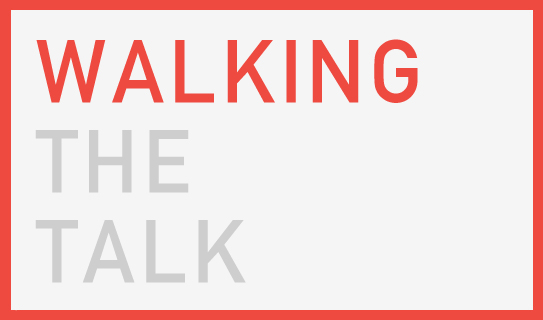
Aligning your commodity brand’s existence with a cause can give you strong brand positioning, if done truthfully. Will Young, founder and president of Sydney-based Campos Coffee, states his reason for a purpose- and cause-oriented brand in a company video: “If we are not in it for good, then there is no reason to wake up every morning and go to work.” His words would not be as powerful if Campos Coffee had not demonstrated its commitment to ethics and philanthropy in coffee by being a Fair Trade Certified organization that calls itself “Direct Trade” by improving education and living standards of the communities with which it works.
There is a powerful reason his approach works. Over the past five years, it has become somewhat of a staple for startups founded by millennials to identify a social cause that can be activated in an authentic way to manifest that the purpose of a product or service goes deeper than solely generating sales. “Purpose” is ingrained in their thinking. Millennials’ emphasis on purpose is probably why there is even a startup, Pledge 1%, to foster startups that seek to commit 1% of their equity, product, profit or time to charity. As Pledge 1% CEO Amy Lesnick told Fast Company: “In 15 years we might not even exist, as early-stage philanthropy will be as common as setting aside equity for future employees.”
The best way to tap into the cause-related marketing trend is to think unselfishly. If you are an entrepreneur considering selling any product, whether a commodity or not, ask yourself why it matters to bring it into this world at this very point in time (and for the long term), and why your audience will deeply care about an often otherwise labeled “so what?” product.
One brand that has answered this question in a unique way is the Package Free Shop. It started as a commodity store (wait, a store just by itself is seen as a commodity by many today!) that specializes in selling commodities such as toothbrushes, razors, soap, bags, laundry detergent, etc. The Package Free Shop is 100% cause-based, selling reusable alternatives to single-use, disposable commodities while teaching customers how to live a “zero-waste life.”
Also ask yourself what your brand will be giving back. Can you identify a social cause that can be activated in an authentic way to demonstrate that the purpose of your product/service goes deeper than solely generating sales? That is the easiest way.
Research shows how much consumers value brands that support charitable causes. A recent cause marketing survey conducted by research firm Toluna showed that 39% of consumers buy into integrated cause strategies such as the “sell one, donate one” model used by TOMS Shoes. The majority of consumers actively seek out brands that donate to causes and say that they would be more likely to purchase a brand that supports a shared cause, according to the survey. Millennials top that list, with 49% seeking out cause brands.
Buy-one-give-one marketing is just one of the many ways brands are connecting with a cause. Here are some other creative ways startups are giving back and connecting their cause with a target audience’s consciousness, outside of the one-for-one model:
- Supporting artisans by ethically sourcing products in developing countries and providing them with steady work at far-better-than-usual pay, along with social programs, education and skills training.
- Giving back 1% to your (shared) cause.
- Creating an eco-friendly, organic, chemical-free, cruelty-free (you name it) model, as long as it supports a shared cause with your audience.
- Equal pay for women, which is sad to have to even mention still today but is unfortunately not available in most companies.
- Form a B Corp, thereby having “to meet rigorous standards of social and environmental performance, accountability, and transparency.”
- Hire staff deemed “unemployable” because of stigmatized health conditions, impairments or felony convictions, and provide a second chance.
- Run a co-op, owned by your employees or your customers.
Of course, no matter what method you choose, your cause has to create true value for the recipients (both the consumer as well as the beneficiary). It’s also important to think all the way to the production of your products; Bennison, for instance, has “mothers in Peru” craft its “one-for-one” line of children’s wear.
If you make cause the center of your brand philosophy, watch out for what I call cause-stamping (think of it as a cousin of greenwashing). The TOMS-branded Apple Watch band (advertised with the marketing message “Give Time”) reflects a clear brand misalignment, despite TOMS’ provision of a year of solar light to a person in need for every band purchased. Unlike TOMS shoes, Apple Watches are clearly a luxury item, priced beyond the reach of many consumers, making the feel-good brand connection seem awkwardly inauthentic when seen on one and the same product. For Apple, it may just have been a sad attempt to buy into a “still-cool” brand ethos in times when the company lacked product innovation headlines.
Today’s exceptional cause-based startups find a truly unique problem to solve by giving back or by applying the otherwise overplayed buy-one-give-one tactic. Here is what you can take with you as you launch, or expand upon, a brand built on the foundation of cause:
- Base the cause on a logical proposition that creates an immediate emotional connection with your target audience.
- Ensure your cause can only be seen as truthful.
- Be certain your cause is extendable enough to expand with you as your product offering diversifies.
- Consider whether the cause directly touches your (current or future) staff’s hearts in order to foster a strong company culture based on purpose.
- Hold yourself accountable and issue progress reports on a yearly basis to ensure you are meeting your own expectations and to spread awareness of the cause (and subsequently your brand).
- Start by giving, then move on to fully embodying the cause in all other aspects of your business — including hiring, location, sourcing and production.
You can read more about how to turn into a cause-based brand, as well as learn about the other 7 traits of today’s admired brands in my book “Bigger Than This – How to turn any venture into an admired brand.”
Vision Critical: How to Cut Through The Brand Statement Clutter
Creating a positioning statement, a mission statement and a vision statement. Not to mention the mighty elevator pitch. It can drive Founders of new, and CMO’s of not so new ventures completely insane.
Rightfully so.
How much do they really differ? Which comes first? How do I translate one into another? Does anyone really care, or will I only create statement confusion, brand angst or promise dizziness amongst my team and my audience?
Start with these 2 steps in order to not go insane while you craft what really should be a wonderful A-HA experience for yourself and your team:
1. Get The One And Only Statement You Will Never Publish Right
You won’t use your positioning statement ever; in public that is.
Yet, this is the very sentence that will drive everything about your brand. The positioning statement is your brand in a one sentence statement. It’s not a quick read (most often it’s a mouthful) and it is not meant to be outward-facing. This one is for your eyes only. It is crafted so you can base any and all other brand statements on it. It is everything about your brand: The who, the how, the what and the all-important why. A business plan disguised in a brand coat.
2. Fuse Mission And Vision Statements Into One – The One And Only You Will Publish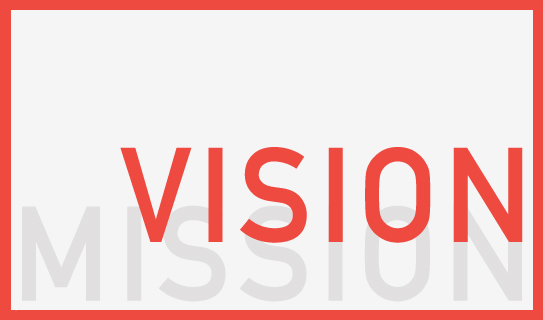
Once you have the positioning statement noted, translate it into a vision/mission statement combo. Yes, in my eyes they can be one and the same; it’s all you need.
When you think about the mission you are on, it can, and should translate into the big vision, or the ‘true north‘ you foresee for your brand. Make it easy for people and create one powerfully inspiring statement that is built on the ‘why’ – anything happening after the ‘because’ from within aforementioned positioning statement.
Taking the Alzheimer’s Association as an example, albeit a bit wordy. Currently we see two separate statements on their web site:
Using my proposed approach, these could be simply morphed into one powerful brand statement:
“[MISSION] We are on a mission to eliminate Alzheimer’s disease through the advancement of research; to provide and enhance care and support for all affected; and to reduce the risk of dementia through the promotion of brain health [VISION] in order to ultimately live in a world without Alzheimer’s disease.“
The mission is what you are currently setting out to achieve (and often are already achieving). The vision is the big, lofty goal. One should lead to another; naturally. By doing so it does not lead to statement confusion, instead you tell the story in a chronological order; a logical order, really.
- Positioning = the brand foundation
- Mission/Vision = showcased publicly, the ‘brand statement’
- Elevator pitch = in conversation only
There you have it, your public brand statement, plus two helpers.
Now go spend the extra time putting the words into action. Your team will thank you.
Re-think Your Elevator Pitch: How To Successfully Introduce Your Brand In Conversation
It’s not that you don’t need to think about your elevator pitch, but I want you to think differently about it.
Like everything in your business, you should not focus on the what, when and how initially, but think about the why instead. You are seeking a specific outcome. What is that outcome? The answer is simple: You need to get people to understand what you do and you’d like them to care about it; perhaps care enough to start seeing you as a prospect to conduct business with, but at the very least enough to continue the conversation with you rather than dashing away towards a more interesting crowd – the crowd that does not pitch them, but that stimulates meaningful conversations. That is the kind of crowd you need to embody.
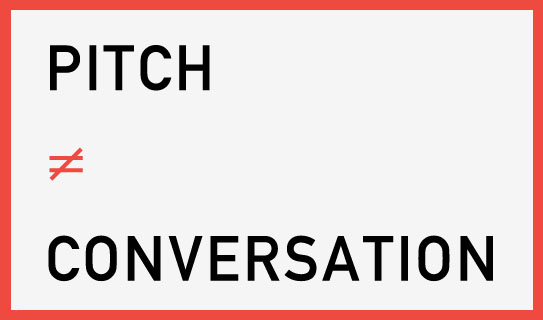
Why should a good conversation include a trained, and most often awkward, pitch? Don’t spend time writing your elevator pitch line, instead think about how you could trigger a question in the person that asked about what you do. Don’t make it into a question (because that really is a pitch), but into a statement that triggers a question.
Don’t craft a monologue sentence about your venture’s operations and target audience, instead think about how you would tell a new friend after a long dinner (potentially with a few alcoholic beverages involved) once they ask ‘So what do you do for a living?’ I bet the answer would not be your trained elevator pitch, instead it would be a very casual and passionate way of stating that thing you do to generate income. Simple and honest. A continuation down the dialogue road that you have already situated yourself on. It takes time, energy and sometimes gut to engage in, and continue, a meaningful conversation with a stranger, especially in business settings such as conferences and summits.
Don’t let the elevator pitch kill what you have established.
When I re-positioned my design and brand agency (Geyrhalter & Company) into FINIEN a few years ago, I initially took the same (wrong) path down the elevator pitch road. Here is how that sounded: ‘We are a specialized brand consultancy creating brand strategy, brand names and brand identities for new ventures.’
No! Boooring. Oh boy, there must be many of those consultancies. It sounded great on my plane ride to the conference. Yes, I noted it down and memorized it; it truly was my elevator pitch. Then I tested it in social settings and it was awful. No one, seriously not a single person, cared.
After lunch that day I changed it to: ‘We make sure startups get branding right from the get-go’ – Ha! Interesting. – That’s cool. Tell me more. – Boy, that truly is a real pain point you are solving.
Bingo!
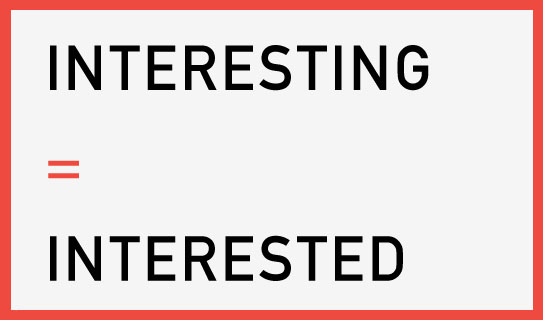
During evening activities that day it changed to a bolder ‘We ensure startups don’t screw up branding’ and it was an instant hit (with follow-ups turning into actual clients).
Simple, personal, interesting. Created to continue a conversation, while moving it towards how I can be of assistance to the person I was not pitching, but simply chatting with. I did not stutter through a memorized statement (that’ll be an elevator pitch), instead I created a very simple conversation starter.
Just like with all things branding, you have to be interesting in order to have someone be interested in you. So skip that pitch and think of the easiest, shortest, most casual and distinct way you can say what you do that only begs for one single outcome: the amicable continuation of your conversation in context of your brand.
Why The ‘Best Brand’ Name Is Not The Best Option For Your Product Launch
Brand Positioning is an art form. It is essential to the success of your venture and it is a topic we have given you plenty of guidance on. Even when it comes to something as important as positioning, just like with most things branding, there are definite fads happening. Recently these dangerous turns in brand positioning have hit actual brand names, which we all know can not change easily over time. That kind of positioning, in a nutshell, sounds something like this:
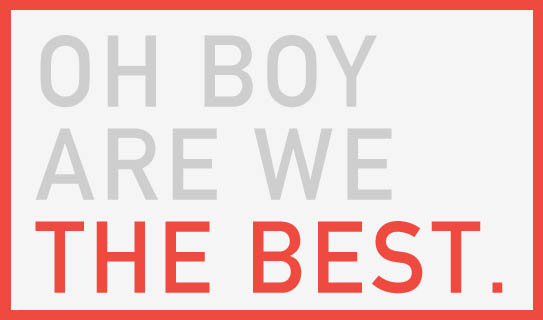
“We are the best. Seriously, we are.” Oh crap! No, you are not.
Everyone thinks their product is the best, but the market will tell you if in fact you are the best. You don’t tell the market that, the market tells you that. It seems like a no-brainer, something no branding expert needs to call out, especially given the joined consensus of the next generation of buyers (to avoid the M-word) that believe in inclusivity, honesty and modesty. Yet we have seen a flood of new brands positioning themselves as being the best through their actual brand names over the past years. In doing so, there is no turning back for them and their ‘strategic’ cockiness.
Especially in the snack food arena, ‘greatness’ in name positioning has overwhelmed the market place. Here’s a sampling of four such brands that I ran into at the market the other day:
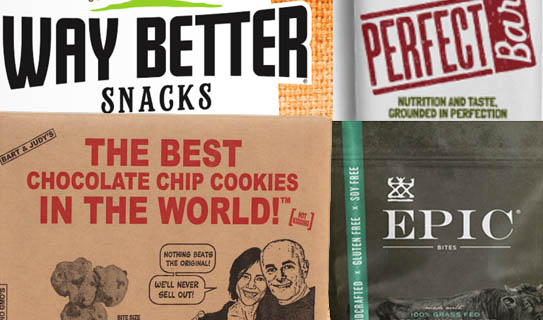
Despite their often superior ingredients, and sometimes great taste (sometimes the opposite), naming a new product ‘way better,’ ‘perfect,’ ‘epic,’ or ‘the best in the world,’ falls nothing short of uninspired.
That is one thing.
More important though is the fact that consumers find it hard to believe a new brand can make such claim. Naming your product in an overpromising manner will attract highly critical customers from the get-go. Guaranteed. And many who will mock you. Your strategy is asking for it. And very likely you won’t be able to satisfy their appetite for tasting ‘the best’ to them as that is solely depending on individual tastes. Such statement coming from a brand itself as part of their brand name does not gain trust and nearly assures that a let-down is imminent – especially for startups that lack shelf-space and marketing dollars to hope for intrigued one-time buyers potentially turning into converts.
If consumers are looking for the perfect snack bar, the best cookie or way better snacks (and who isn’t?), fulfill their quest instead by providing specific guidance on facts, ingredients and testimonials through your brand language and marketing campaigns. It is a safe guard to ensure that your product in fact will live up to their unique expectations. Instead of describing what you think differentiates your product (or makes it float high above the rest) in your brand name, position your brand name as one that consumers like to talk about without feeling funny or being ridiculed. It will spare you of the same fate.
(Pretty epic advice, right? Without a doubt the best post in the world.)
What You Can Learn From This Bar’s Brilliant Pricing Promotion
This article was originally published as part of my column in Inc. on July 7, 2015.
On July 7, The Way Station bar in Brooklyn offered its female patrons any drink for just 77 cents on the dollar. Here’s how it ended up hitting the jackpot.
Giving away free stuff, matching a sale to a donation, giving major discounts, celebrating certain tribes (psychographic or demographic)–all of these are age-old marketing and sales techniques that are often applied to certain days, products, or audiences. I’m sure this became crystal clear to all of us once again during the 4th of July holiday–any holiday is a good time to come up with that sales shtick or marketing idea to generate immediate sales and future leads.
Most sales tactics are usually lukewarm, overused, and, well, “sales-y.” They start to turn interesting when they feel not only generous but also authentic and empathetic. A tough mix to brew up, but one bar in Brooklyn, New York, has done just that this week. On July 7, The Way Station bar offered its female patrons any drink for just 77 cents on the dollar.
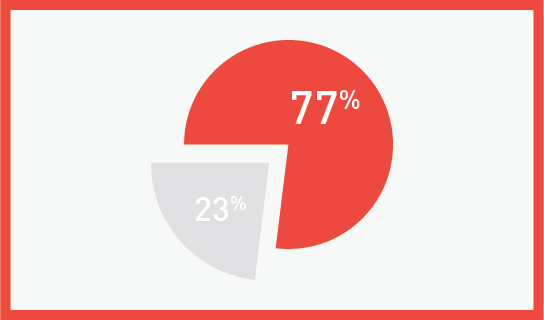
Bizarre, don’t you think? Here’s where the empathy and authenticity hits the jackpot: DNA Info New York notes that the business is “recognizing the difference between the average pay of women and men–77 cents on the dollar, according to the labor department–charging ladies only 77 percent of their bar tabs.”
Even though the idea itself stems from the Lean In D.C. chapter of Sheryl Sandberg’s Lean In movement, I thought it was a great promotional stint. Then it hit me: Is this a one-time marketing idea, or should it turn into a business model?
I spend a lot of time with entrepreneurs defining their brand positioning at the onset of their company foundation, and the lines between sales opportunity, marketing shtick, and authentic brand promise tend to blur quickly. And that is a mighty good thing.
Toms gets rightfully credited for creating the “one-for-one movement,” which acted as the foundation to a tremendously successful business model that has been adopted by countless others, from Warby Parker to Yoobi. It’s a new twist on an old sales tactic: buy one, get one free.
Entire companies are now based on what used to be “special promotions,” and they’ve made it their meaningful brand promise. The huge success of celebrity chef Danny Meyer’s Shake Shack can be attributed to his “enlightened hospitality” mantra, which is taken into action through the burger chain’s staff being overly generous to customers. Yes, you might get a free dessert because a waiter decided you deserved it.
Startups that successfully weave sales tactics into their brand’s positioning are becoming more and more prevalent by making truly meaningful experiences for customers. Looking at the one-day promotion by the Brooklyn bar made me wonder why the 77 percent discount should not turn into the next one-for-one model for other businesses.
Hopefully, one day the wage gap will close for good. If your startup is seriously concerned about gender pay inequality in 2015 and beyond, the markup lost in that missing 23 percent can be made up in many other ways. Attracting a passionate audience that will fully embrace and share your brand–that might be more difficult to accomplish.
Just my 23 cents on a topic that I hope will be taking branding, and the startup scene, by storm–and rightfully so.
Your Brand’s Core Values: From Document To Embodiment
Deriving your venture’s core values early on is essential to formulating a strong brand from within.
Imagine your core values being displayed beautifully in your company’s lobby: Your team will see them every day and it should engage and inspire them. At the same time, clients and shareholders should be able to read, and be in agreement with, your core values actually representing, and serving, your brand well. They need to resonate across the board. We advise to keep those value-statements to three very short and actionable sentences (some of the more universally applicable examples we derived with our clients in the past months are shown below):
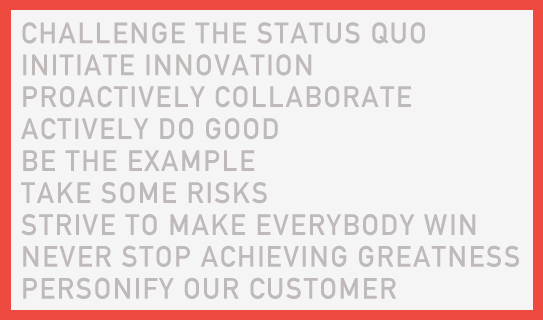
It is easy to notice that core values often sound similar, perhaps even a bit generic if taken out of context, regardless of how hard we worked with our clients on crafting them. They often do not feel naturally implementable either. No surprise then that they often stay put on a desktop in a PDF document, rather than being embodied by the team.
I gave this issue a lot of thought as I urge my team and myself to create work that is intrinsically being embodied by our clients to push their ventures into great brands.
I recommend embodying your core values the same way I would recommend you preparing for a very important presentation: Once you have the presentation deck done, the speaker notes inserted, and you start practicing, you will realize that the more you practice, the more you embody the content and overall spirit. The day of the presentation you will notice that you fully embody the content, to the extent that you could hold a successful speech even if a major electricity outage hit – in candle light, without slides, without speaker notes – because you are living the content.
Treat your core values the same way: Try assigning one of your new brand’s three core values to each day of the work week, then make it your goal to do something each day that turns the words of one core value into action. It might be a project scope document and you decide to question the status quo and try to turn it into a better product. It might be actively doing good and being the example by staying late to help a co-worker meet her deadline.
Examples are endless, core values there are only a few, so if you start checking one value off the list day after day over the course of two weeks, and you ask your team to be doing the same, you will quickly realize that you do not have to be reminded about the values anymore – you will just be doing it. This will be the magic moment where you will be embodying your brand’s core values, and that brand document that resides on your desktop can now be accidentally erased, because it does not matter anymore. Action, as we all know, speaks louder than words.
How To Go Against The Grain And Create A Brand That Is Built On Your Undiluted Beliefs
Most entrepreneurs start off being empowered by one of two very good reasons; sometimes both: A passion for what they (are about to) do, and the urge for the profits they foresee being generated by the new venture. That being said, we mostly see brands talk about the passion that drives the founders and employees. It’s hard not to catch any brand doing it; from most massive food brands such as Chipotle to the few true passion brands like TOMS.
At times you come across a very honest, true-to-yourself, reason that goes beyond your passion or drive for financial success. It is so simple, it’s scary. And when done right, it is so radical that most steer away from it out of fear to upset and turn away potential customers. Herein lies the genius of a founder personality. Not brand personality, but a founder’s personality being infused so heavily into the venture that the brand becomes the person and (s)he calls shots in the public that most CMO’s would get fired for.
An amazing example I came across recently, while spending quality time with my folks in Austria, is that of shoe-maker GEA. The company produces in-house (on-site), hand-made, long lasting and easy-to-repair traditional Austrian footwear. GEA’s social and environmental record is beyond outstanding. So far so great, but now add the underlying layer of true founder personality: The shoe company publishes a political newspaper called Brennstoff (translated: ‘fuel’), in which the owner, Heini Staudinger (a great wiki read for those of you who can read german) boldly voices his opinion and pushes the envelope on a very clear and steady social course; one that many don’t appreciate, one that upsets corporations, investors, banks and the government, and one that the ones who do appreciate, truly love.
And that’s what makes a true founder personality: unafraid to exclude the many, extremely powerful to the few.
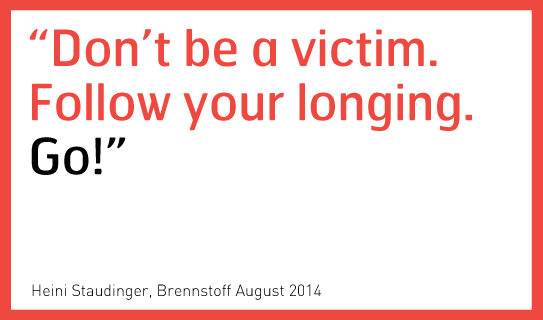
The for-profit company, which is named after the goddess of earth, condemns consumerism and capitalism (even releasing their own currency called ‘Waldviertler,’ which is accepted by 200 regional businesses) and yet attracts so much investment money (through crowdfunding) that they are looking past their 41 stores to unconventional ways of expanding their operations, such as founding an academy. Heini Staudinger’s GEA is living proof that going against the grain and staying true to your personal beliefs, even if they are based on extreme political opinions (or religious beliefs), can be a powerful branding tool that deserves consideration when crafting your new brand’s personality. It may turn out to be your own, undiluted and uncensored, personality that will turn into your brand personality. How about that for ‘radical’ brand thinking? Don’t think at all, just ‘follow your longing and go!’
How To Create A Truly Meaningful Positioning Statement
Oh yes, the good old Positioning Statement; used for decades, it still is the single most powerful tool to define a new venture’s audience, category, benefits…and reason for believing. Powerful, because this is all part of one single sentence; a sentence that many Founders struggle with, as a recent poll of ours showed.
When I work with clients on defining, and refining their positioning statement as part of our Resonaid™ workshops, it takes between one and four hours to get this sentence right. Yes, power comes with responsibility, and questioning the reason for being, and for believing in any new venture is worth a few hours of pondering.
Search for the term Positioning Statement and you will be surprised by just how varied the approaches to a classic branding tool are. It is most astonishing that a majority of statements leave out the most essential part of it; the reason to believe.
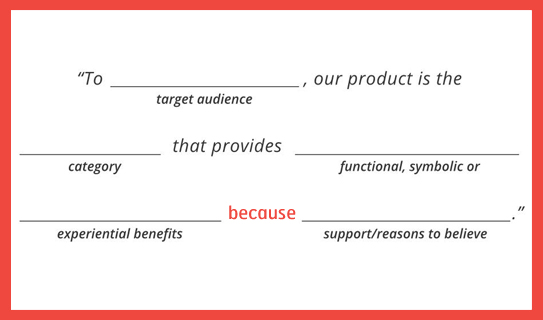
Most statements focus on the differentiators, ours (pictured above) focuses on the ‘because’ – the part that takes time to ponder and to perfect. It is also the part that will truly differentiate your venture from others. It puts your venture to the test: Is it truly a big idea? Is it important? Can it be bigger? Should it become more important? Is this why I will work late nights and put a lot at stake?
The big question ‘Why’ has been making its rounds past the branding community for a while now, most noteworthy through Simon Sinek’s TED talk. Despite its popularity, just like is the case with the mundane idea of writing a positioning statement altogether, the ‘because’, the key part that will indeed generate you sales, is often neglected. If you found an excuse not to tackle this sentence for your venture, take these words as a gentle kick in your behind and make today the day for accomplishing it. It will change your venture for the better, guaranteed.
